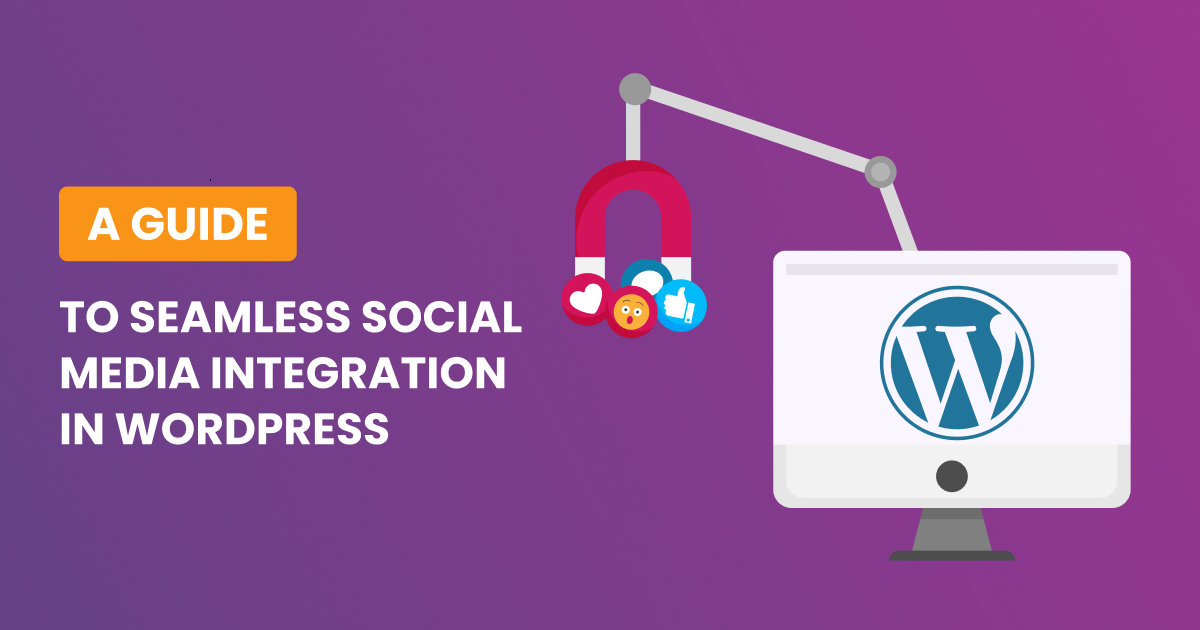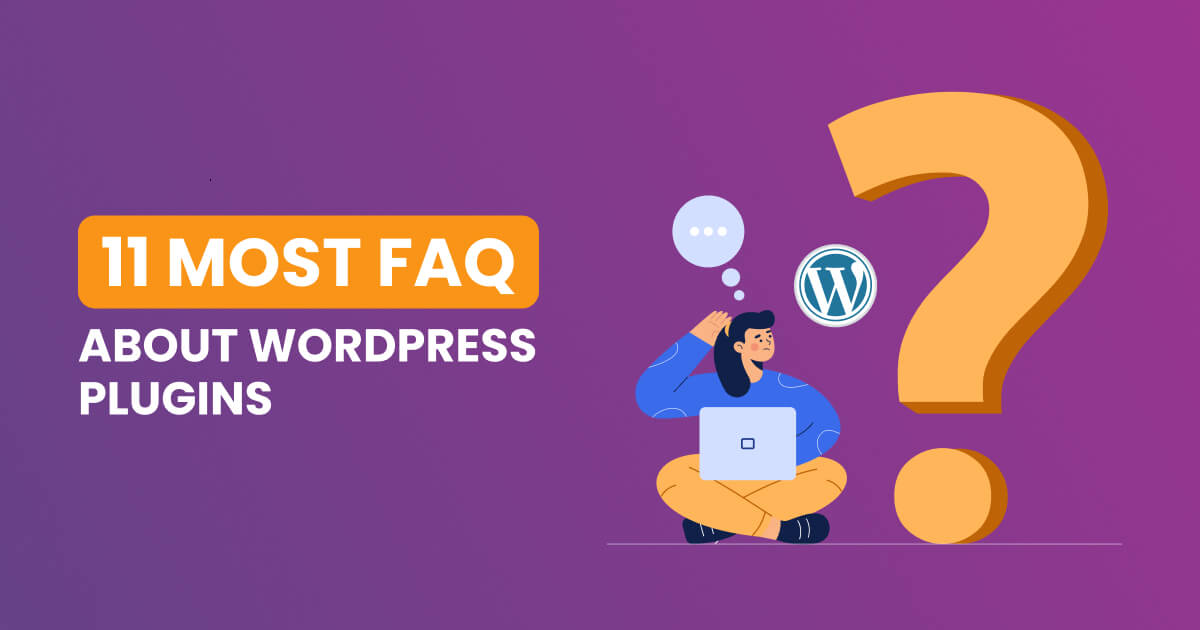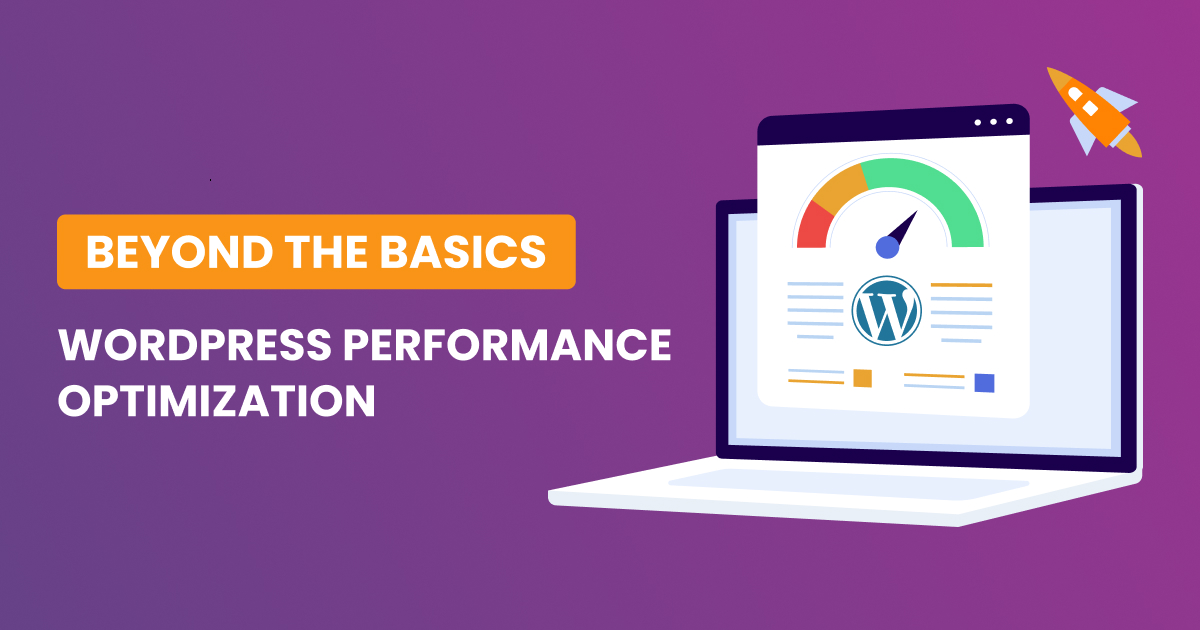In the dynamic landscape of web development, two critical aspects that demand unwavering attention are Search Engine Optimization (SEO) and Mobile Responsiveness. For WordPress users, mastering these elements is not just a matter of choice but a necessity in ensuring a website’s success. In this article, we will delve into the challenges users commonly face in optimizing their WordPress sites for search engines and making them seamlessly responsive across various devices.
SEO Challenges
Content Optimization
Crafting content that not only engages the audience but also aligns with SEO best practices can be challenging. Balancing keyword optimization, quality writing, and relevance to the target audience is an ongoing struggle.
SEO-Friendly URLs
Users often grapple with creating URLs that are both human-readable and optimized for search engines. Striking the right balance between the two can be tricky, and improper URL structures can negatively impact SEO.
Duplicate Content Issues
Duplicate content across a website can confuse search engines and lead to lower rankings. Users need to be vigilant in avoiding identical or similar content on multiple pages.
Website Speed
Google considers page speed as a ranking factor, and slow-loading websites may face SEO setbacks. Optimizing images, leveraging browser caching, and investing in reliable hosting are crucial steps to enhance website speed.
Mobile Responsiveness Challenges
Design Consistency Across Devices
Ensuring a consistent design and user experience across various screen sizes is a significant challenge. Elements that look perfect on a desktop may not translate well to smaller screens, affecting user engagement.
Navigation and User Interface
The challenge lies in creating a navigation structure that is intuitive and user-friendly on both desktop and mobile devices. Users often struggle to strike a balance between an aesthetically pleasing interface and practical functionality.
Image and Media Optimization
Large images and media files can significantly slow down mobile load times. WordPress users face the challenge of optimizing media content without compromising on visual appeal.
Mobile-Friendly Testing
With the ever-evolving landscape of mobile devices, testing a website’s responsiveness across various platforms is crucial. Users often find it challenging to keep up with the multitude of devices and browsers available in the market.
Mitigating Challenges
Regular Updates and Maintenance
Keeping WordPress core, themes, and plugins up to date is essential to address security concerns and ensure compatibility with the latest technologies.
SEO Tools and Analytics
Leveraging SEO tools and analytics can provide valuable insights into website performance. Monitoring keyword rankings, user behavior, and website traffic helps users make informed decisions.
Responsive Design Frameworks
Adopting responsive design frameworks, such as Bootstrap or Foundation, can assist in creating a flexible and adaptive layout that caters to different devices.
Mobile-First Approach
Designing with a mobile-first mindset ensures that the website is initially optimized for smaller screens. This approach promotes a seamless transition to larger devices.
Navigating the SEO challenges and achieving mobile responsiveness in WordPress is a journey that requires dedication and continuous improvement. By staying informed, embracing best practices, and addressing challenges promptly, WordPress users can create websites that not only rank well in search engines but also provide a delightful experience across all devices. In this ever-evolving digital era, the ability to adapt and conquer these challenges is the key to online success.
How does mobile responsiveness influence SEO ?
In recent years, search engines, particularly Google, have placed a significant emphasis on mobile-friendliness as a ranking factor. Google’s mobile-first indexing means that it primarily uses the mobile version of a site’s content for indexing and ranking.
Mobile responsiveness directly influences SEO in several ways
Ranking Algorithm
Google’s ranking algorithm considers mobile-friendliness as a ranking factor. Websites that are mobile-friendly are more likely to rank higher in search engine results pages (SERPs) compared to those that are not optimized for mobile devices.
Mobile-Friendly as a Ranking Factor
Google uses various criteria to assess the relevance and quality of a website’s content. In recent years, the mobile-friendliness of a website has become a key consideration. Websites that are optimized for mobile devices are more likely to rank higher in search results compared to those that are not.
Importance of Mobile Optimization
As part of its commitment to delivering the best user experience, Google acknowledges the shift in user behavior towards mobile devices. Websites that provide a seamless and responsive experience on mobile are considered more valuable and are rewarded with higher rankings.
Impact on Search Rankings
When a website is mobile-friendly, it signals to Google that the site is accessible and user-friendly across various devices, including smartphones and tablets. Google’s algorithm then takes this into account when determining how well a website should rank for specific search queries.
Competitive Advantage
Websites that prioritize mobile optimization gain a competitive advantage in search rankings. As Google aims to present the most relevant and user-friendly results, mobile-friendly sites are more likely to stand out and attract higher visibility in SERPs.
Adapting to User Behavior
The emphasis on mobile-friendliness aligns with the changing landscape of user behavior. With an increasing number of users accessing the internet through mobile devices, Google’s ranking algorithm encourages websites to adapt to this trend to ensure a positive user experience.
In summary, mobile responsiveness is a significant factor in Google’s ranking algorithm, influencing how websites are positioned in search results. By prioritizing mobile optimization, websites increase their chances of ranking higher, attracting more organic traffic, and providing a better overall user experience.
User Experience
Mobile responsiveness contributes to a positive user experience. Google aims to provide users with the best possible results, and if a website is not mobile-friendly, it may lead to a higher bounce rate and lower user engagement, negatively impacting SEO.
Positive User Experience
Mobile responsiveness contributes directly to the overall user experience on a website. When a site is optimized for mobile devices, users can easily navigate, read content, and interact with the interface. This positive user experience is essential for retaining visitors and encouraging them to explore further.
Bounce Rate and User Engagement
Google considers user engagement metrics, such as bounce rate, when evaluating the quality of a website. A high bounce rate, indicating that users quickly leave a site after viewing only one page, can negatively impact SEO. Mobile-friendly websites tend to have lower bounce rates, as users are more likely to stay and engage with the content.
Readability and Accessibility
Mobile optimization involves creating content that is readable and accessible on smaller screens. Text, images, and interactive elements should adapt to different screen sizes without compromising clarity. This ensures that users can consume the information easily, leading to a positive perception of the website.
Seamless Navigation
A mobile-friendly design enhances navigation by providing a seamless and intuitive experience. Mobile users often have different needs and expectations compared to desktop users. Websites that prioritize mobile responsiveness make navigation easier, allowing users to find information quickly and efficiently.
Impact on Conversions
For websites with e-commerce or conversion-related goals, mobile responsiveness is crucial. Users are more likely to complete transactions or take desired actions if the website is optimized for mobile. A positive mobile user experience can directly contribute to higher conversion rates, positively influencing the site’s overall performance.
Google’s Emphasis on User Experience
Google’s overarching goal is to deliver the best possible results to users. As such, the search engine rewards websites that prioritize user experience. Mobile-friendly sites align with this goal, and Google’s algorithm takes into account the positive impact of mobile optimization on user satisfaction.
Mobile-First Indexing
With mobile-first indexing, Google predominantly uses the mobile version of the content for indexing and ranking. If a website is not optimized for mobile devices, it may not perform well in mobile search results, affecting overall visibility.
Definition of Mobile-First Indexing
Mobile-first indexing is a strategy employed by search engines, particularly Google, where the mobile version of a website is prioritized for indexing and ranking over the desktop version. In other words, the search engine predominantly uses the mobile content and experience to evaluate a site’s relevance and determine its position in search results.
Significance for SEO
With the prevalence of mobile device usage, Google introduced mobile-first indexing to ensure that search results align with the majority of users’ experiences. Websites optimized for mobile devices are more likely to perform well in this indexing system, leading to better visibility in mobile search results.
Mobile-First Crawlers
Search engine crawlers are bots that systematically browse and index web pages. Mobile-first indexing involves the use of mobile-first crawlers, which prioritize crawling and indexing the mobile version of a site. Websites not optimized for mobile may not be indexed as effectively, potentially leading to lower rankings.
Impact on Search Results
Websites optimized for mobile-first indexing are more likely to appear prominently in mobile search results. If a site is not mobile-friendly, it may not rank as well on mobile devices, potentially leading to a loss of visibility and organic traffic, especially in the growing mobile user demographic.
Dual-Compatibility Considerations
While mobile-first indexing emphasizes the importance of mobile optimization, it’s essential for websites to maintain dual compatibility. This means ensuring that the desktop version remains functional and provides a good user experience. However, the mobile version takes precedence in the context of indexing and ranking.
Google’s Guidance and Recommendations
Google provides guidance and recommendations for webmasters to optimize their sites for mobile-first indexing. This includes ensuring that both versions of a site (desktop and mobile) have equivalent content, structured data, and metadata. Adhering to these guidelines enhances a website’s performance in mobile search results.
In summary, mobile-first indexing is a fundamental shift in how search engines evaluate and rank websites, giving priority to the mobile version. Websites that embrace mobile optimization and adhere to Google’s guidelines for mobile-first indexing are better positioned to succeed in mobile search rankings, ultimately influencing their overall SEO performance.
Page Load Speed
Mobile responsiveness is closely tied to page load speed. Slow-loading mobile pages can result in a poor user experience and may lead to lower rankings. Google has indicated that site speed is a ranking factor, especially for mobile search.
Importance of Page Load Speed
Page load speed refers to the time it takes for a web page to fully load in a user’s browser. It is a critical factor in user experience and has become a significant consideration for search engines, including Google, when determining search rankings.
User Experience Impact
Fast-loading pages contribute to a positive user experience. Users tend to prefer websites that load quickly, as slow-loading pages can lead to frustration and a higher likelihood of abandonment. Google values user satisfaction, and therefore, page load speed is incorporated into its ranking algorithm.
Mobile Optimization and Page Speed
Page load speed is closely linked to mobile optimization. Mobile users often have slower internet connections or limited data plans, making fast page load times even more crucial. Websites optimized for mobile devices typically have streamlined designs and optimized assets, contributing to faster loading on smartphones and tablets.
Google’s Ranking Factor
Google has explicitly stated that page load speed is a ranking factor, and it applies to both desktop and mobile searches. Faster-loading pages are more likely to rank higher in search results compared to slower-loading counterparts. This reflects Google’s commitment to delivering results that provide a positive user experience.
Core Web Vitals
Google introduced Core Web Vitals as a set of specific metrics that measure the user experience of web pages. These metrics include factors like Largest Contentful Paint (LCP), First Input Delay (FID), and Cumulative Layout Shift (CLS). Page load speed contributes significantly to these metrics, and websites that excel in Core Web Vitals are favored in search rankings.
Impact on Bounce Rate
Page load speed influences bounce rate, which is the percentage of visitors who navigate away from a site after viewing only one page. Slow-loading pages often lead to higher bounce rates, negatively affecting a website’s overall performance. Lower bounce rates are associated with positive user engagement and, consequently, better SEO outcomes.
In summary, page load speed is a critical aspect of both user experience and SEO. Websites that prioritize fast-loading pages, especially in the context of mobile optimization, are more likely to rank higher in search results, retain visitors, and deliver a positive overall experience to users.
Local SEO
Mobile searches often have local intent, and Google prioritizes mobile-friendly websites for users conducting local searches. Local businesses, in particular, benefit from mobile optimization in the context of local SEO.
Definition of Local SEO
Local SEO (Search Engine Optimization) is a digital marketing strategy focused on optimizing a website to enhance its visibility for local search queries. It aims to connect businesses with local customers by ensuring that their online presence is optimized for location-specific searches.
Mobile Searches and Local Intent
Mobile devices are commonly used for local searches, with users seeking nearby businesses, services, or information. Mobile-friendly websites are essential for capitalizing on local search opportunities, as they cater to the preferences and behaviors of users conducting searches on the go.
Local Pack Rankings
Google’s Local Pack, which typically appears in search results for local queries, showcases a selection of businesses related to the user’s search. Mobile-friendly websites are more likely to appear in the Local Pack, as Google prioritizes mobile optimization for users conducting searches on mobile devices.
Importance of Location-Based Information
Mobile optimization for local SEO involves providing accurate and detailed location-based information on a website. This includes the business’s address, phone number, operating hours, and other relevant details. Mobile users are more likely to engage with a business if they can quickly access this information.
Google My Business (GMB) Optimization
For local SEO, optimizing a Google My Business (GMB) listing is crucial. Mobile users often access GMB listings while on the move, looking for essential information such as directions and reviews. A well-optimized GMB profile, coupled with a mobile-friendly website, enhances a business’s visibility in local search results.
Local Mobile Search Trends
The prevalence of mobile devices has led to an increase in local mobile search trends. Users frequently use their smartphones to find nearby businesses, restaurants, services, and more. Mobile optimization ensures that a website aligns with these trends, capturing the attention of users seeking local information.
Positive Impact on Local Rankings
Mobile-friendly websites are more likely to rank higher in local search results, contributing to a business’s overall local SEO success. Google considers factors such as mobile-friendliness and relevance to the user’s location when determining the ranking of local businesses.
In summary, mobile optimization plays a crucial role in Local SEO, especially as mobile devices are commonly used for local searches. Businesses that prioritize mobile-friendly websites, provide accurate location-based information, and optimize their Google My Business listings are better positioned to succeed in local search rankings and attract nearby customers.
Mobile-First Users
With the increasing prevalence of mobile devices for internet access, a significant portion of users are accessing websites through smartphones and tablets. Optimizing for mobile ensures that a website caters to the needs of a growing mobile audience.
Definition of Mobile-First Users
Mobile-first users refer to individuals who primarily use mobile devices, such as smartphones or tablets, to access the internet and interact with online content. These users rely on mobile devices as their primary means of online communication, information consumption, and transactional activities.
Growing Mobile Device Usage
The prevalence of mobile-first users has increased significantly in recent years. With the widespread availability of smartphones and improved mobile connectivity, a substantial portion of internet users now prefers accessing websites and services through mobile devices rather than traditional desktop computers.
Shift in User Behavior
Mobile-first users represent a shift in user behavior, where the convenience and portability of mobile devices influence how individuals consume content, search for information, and engage with online platforms. Adapting to this shift is essential for businesses and websites aiming to cater to the preferences of a mobile-first audience.
Mobile-Optimized Content Consumption
Mobile-first users consume content differently than desktop users. They often prefer shorter, easily digestible content that is optimized for smaller screens. Websites that prioritize mobile optimization are better suited to meet the content consumption preferences of mobile-first users, enhancing the overall user experience.
Importance for Website Design
Designing websites with mobile-first users in mind involves creating responsive designs that adapt to various screen sizes. Mobile optimization ensures that the layout, navigation, and functionality of a website are well-suited for mobile devices, providing a seamless experience for users accessing the site on their smartphones.
Advertising and Engagement
Advertisers and content creators often target mobile-first users through mobile advertising platforms and social media channels optimized for mobile. Engaging with users on their preferred platforms and devices contributes to higher levels of interaction and brand visibility among the mobile-first audience.
In summary, mobile responsiveness is an integral part of SEO challenges. Websites that prioritize mobile optimization not only meet the expectations of search engines but also provide a better experience for users, ultimately contributing to improved search rankings and overall online visibility.








